HMV: The rise and fall of a music icon
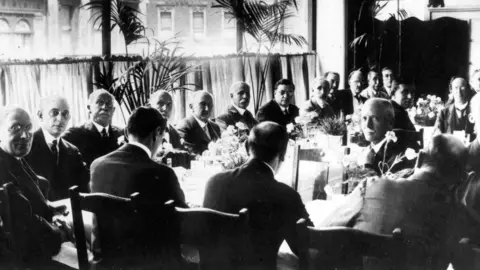 PA
PAIt was on 20 July 1921 that British composer Sir Edward Elgar opened the doors of a new shop at 363 Oxford Street, named "His Master's Voice".
But the history of the brand that became known as HMV reaches back to the introduction of the gramophone in the 1890s.
The inventor of the music player, Emile Berliner, got help from William Barry Owen and Trevor Williams to record and manufacture records for his devices, and the trio set up the Gramophone Company in 1898.
Once formed, the outfit focused on creating records and players in its factory in Hayes and distributing them to independent shops around the country.
But to make them stand out, an iconic logo was needed.
Owen bought a painting entitled "His Master's Voice" in 1899 from the artist Francis Barruad, featuring Nipper the Dog staring into an Edison cylinder phonograph.
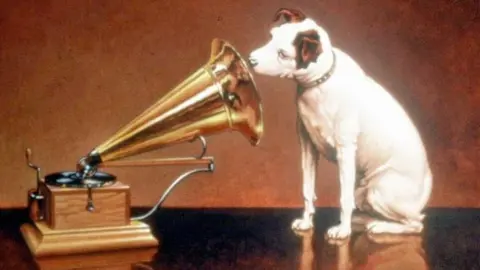 HMV/PA
HMV/PAHe asked the painter to substitute it with a gramophone and a year later the company had gained the rights to the picture and what was to become one of the most recognisable brands in music.
It became their official trademark in 1909 and while the Gramophone Company was never officially called His Master's Voice Company, the famous pooch on the records meant it was how the public knew them.
As a result, it was a natural choice of name for their first store.
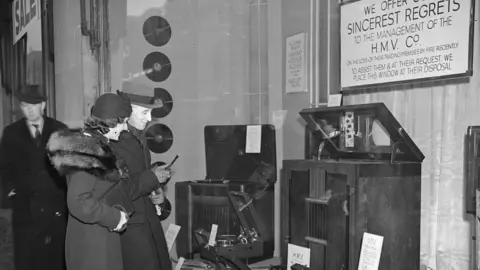 Getty Images
Getty ImagesThe shop at 363 Oxford Street was destroyed by fire in 1937 and a temporary shop was set up on Bond Street until its reopening in 1939 - with the addition of an air-raid shelter for World War Two.
Despite the horror of the war, music lived on, with patriotic songs becoming popular throughout the 1930s and 1940s.
HMV also introduced listening posts so customers could come in and listen to records before they took them home - an initiative replicated across the industry.
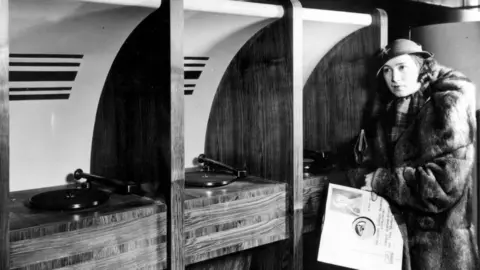 PA
PACome the 1950s, the world was set to be shaken with a more positive force, as pop music exploded.
More than 280 million singles were sold through the decade in the UK and HMV became a magnet for music lovers.
These included as Cliff Richard, who cut a demo in the shop's studios and then secured a deal with the shop's parent company EMI, and Brian Epstein, who wanted to do the same for a then-unknown act, The Beatles.
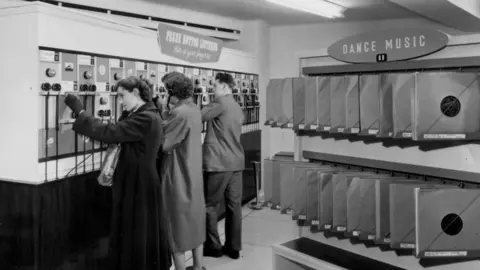 PA
PABy 1966, HMV began to expand, first in London and then through the rest of the country. In just six years, it doubled in size and became the UK's largest music retailer.
The 1970s saw rivals come to bite at its heels.
Our Price grew from its humble beginnings in London's Finchley Road, specialising in cassettes and eight tracks, to takeover as the country's second-biggest music seller after Woolworths, and Richard Branson opened his flagship Virgin Megastores a stone's throw from HMV on Oxford Street in 1976.
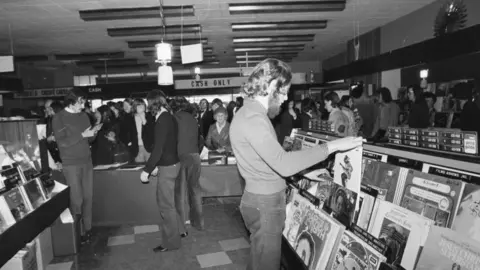 Getty Images
Getty ImagesBut come the 1980s, with the introduction of the compact disc and a 50,000ft flagship store opening in a new Oxford Street premises, HMV was back in the game.
The chain was at the heart of the invention of in-store appearances by the biggest acts of the day.
Paul McCartney, Michael Jackson, Madonna, David Bowie and Kate Bush were just some of the multi-million selling artists to grace its stores, signing CDs and playing exclusive sets for those who managed to squeeze in between the record racks.
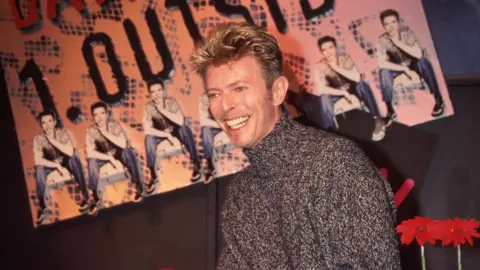 Getty Images
Getty ImagesThe 1990s saw more growth in sales for HMV and more expansion as the rise of grunge and hip hop dominated the charts.
The chain opened its 100th store in 1997 and McCartney returned to Oxford Street to re-launch its flagship, with more than 5,000 people turning up to watch.
And as the DVD format rose in popularity, HMV jumped onboard, helping the company expand to more than 200 stores by 2004.
In the 2000s, more stars continued to flock to the shops to sell their wares, including Beyonce, Amy Winehouse and Lady Gaga.
 Getty Images
Getty ImagesBut along with new music, it was the decade that saw the launch of Apple's iPod, and the digital revolution had begun.
After a raft of acquisitions by HMV, buying out smaller chains like Fopp and its rival Zavvi, as well as entering the live music business with Mean Fiddler, things took a turn.
The year after digital music revenues overtook sales of physical formats for the first time in 2012, HMV appointed Deloitte as company administrators and suspended shares.
 Getty Images
Getty ImagesLoyal fans of the shops breathed a sigh of relief as Hilco, a firm that specialises in restructuring, took over the company and its 141 stores in a deal worth £50m.
HMV was to live another day, and despite closing its major store on Oxford Street, it returned to its original home at number 363 in October 2013, reinstating its retro signage and welcoming more acts, such as Stormzy and Kylie.
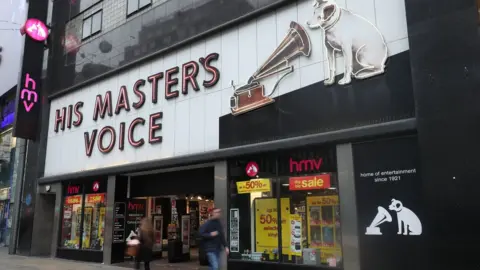 PA
PABut it was still being hit hard by the expansion of online shopping, the creation of streaming services and the cold hard fact that fewer people were buying physical formats.
Just days after the Christmas festivities of 2018, the retailer was poised to go into administration again - with more than 120 stores and 2,200 staff at risk.
After a bidding war, it was announced that some of the stores will be saved by the Canadian entrepreneur, Doug Putman,
Despite the rescue, fears over the long term future of the famous HMV brand are unlikely to go away.
